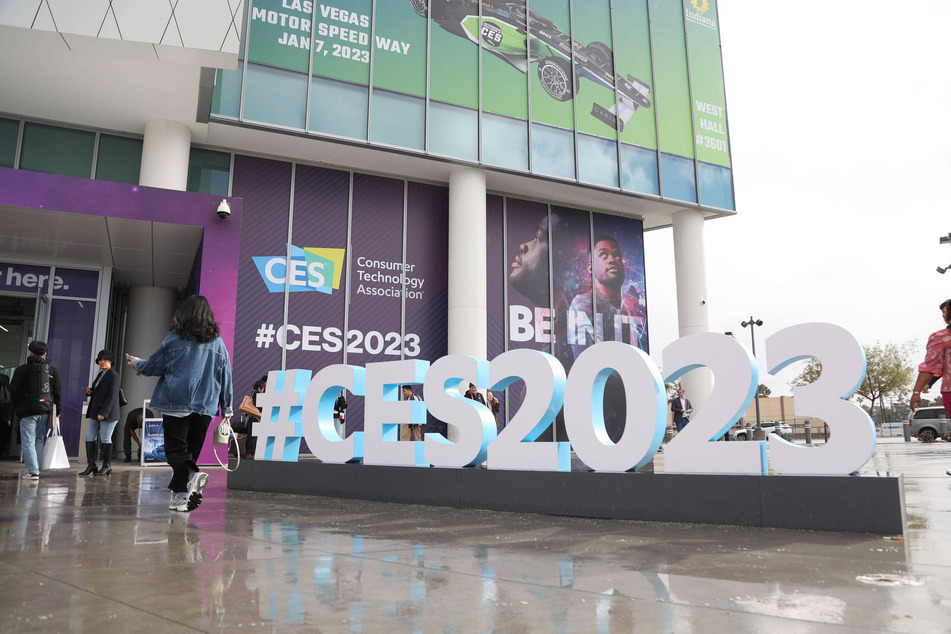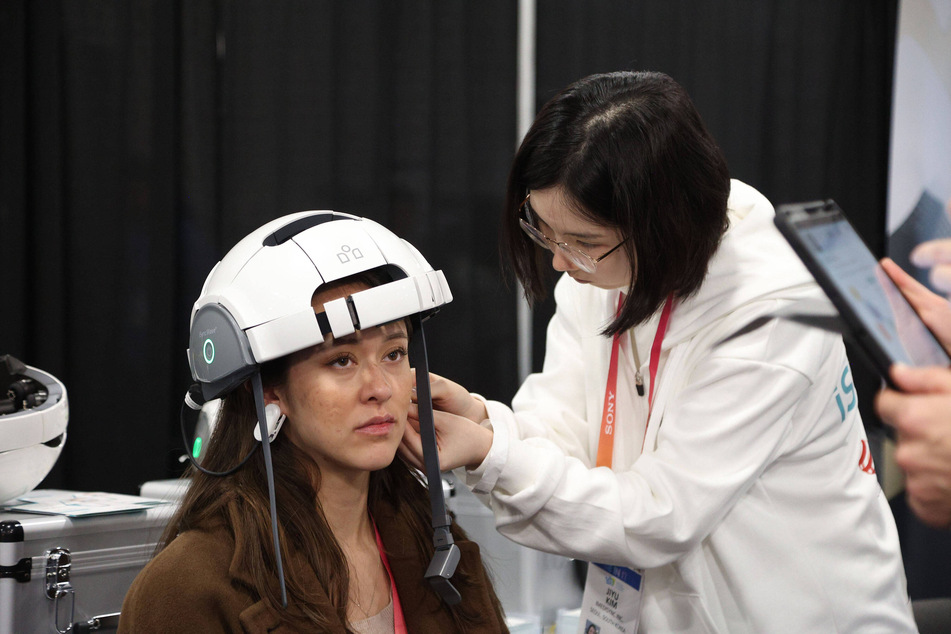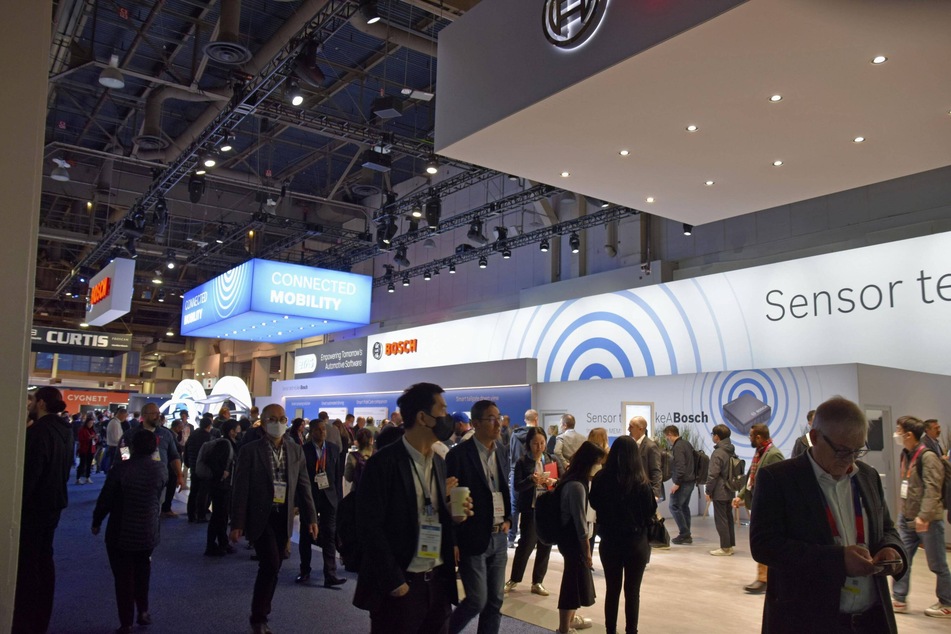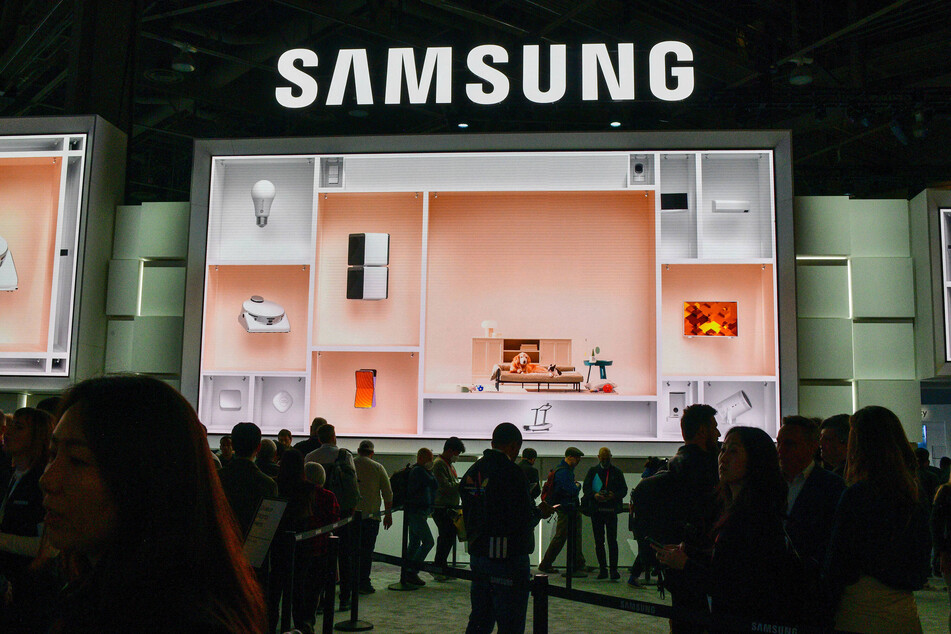The biggest tech trends of 2023 we've seen at this year's CES
Las Vegas, Nevada - War, pandemic, and inflation have taken their toll on the tech industry, but the CES tech fair now wants to sprinkle some optimism at the start of 2023.

The CES began as the Consumer Electronics Show in 1967, with its first event taking place in New York City.
The trade fair, which is owned and produced by the Consumer Technology Association (CTA), has often seen important technology premieres over the past 45 years – such as the first video recorder, shown in 1970, or the first DVD in 1996. Then, the first televisions with OLED advanced screen technology in 2008.
That slowed down a little due to the pandemic over the past three years, but now, 3,100 exhibitors from 173 countries are vying for CES visitors' attention. Some of the key themes on show in Las Vegas may dominate the tech year ahead.
AI, quantum dot tech, and services are among the emerging innovations set to turn the industry's frown upside down.
AI is just getting started

There were spectacular breakthroughs in artificial intelligence (AI) applications at the end of 2022. AI research company OpenAI released chatbot ChatGPT, which can provide intelligent answers to complex questions.
In no time at all, word got around that the text generator can write essays in seconds that don't seem any different to seminar papers written after hours of research. The software robot can also imitate Shakespeare or write program code.
Text-to-image generators like Midjourney and Stable Diffusion can already produce impressive art and are going to keep improving with each update.
The AI trend will only gather pace in 2023.
The big AI specialists like Google, Microsoft, and Meta are not likely to leave the field to challengers like OpenAI, while you can expect to see smaller providers and start-ups also jumping on the AI bandwagon.
The metaverse isn't just for Meta

The metaverse – a virtual interactive environment that you enter by putting on a VR headset – has been talked up by Facebook parent company Meta as the future of work, entertainment, and shopping.
But this concept also includes applications in which digital information is displayed in the user's real field of vision.
"For me, the metaverse is the next generation of the internet," said Steve Koenig, who heads market research at the CTA.
The Las Vegas fair shows that the Metaverse is not just something Mark Zuckerberg is so excited about that he renamed Facebook Meta. HTC, for example, is expected to come up with a rival product to Meta's Quest VR glasses.
Meanwhile, Sony announced ahead of the CES that the new PlayStation VR2 virtual reality glasses will be launched this February. There are four cameras embedded in the headset, which record the movements of the controller and the players, including their viewing directions.
Metaverse applications are also making headway: for example, the car manufacturer Stellantis and Microsoft are presenting a metaverse showroom at CES, and a company called OVR is presenting a solution that can be used to convey smells in the metaverse.
People want to buy more and use services, but will inflation let them?

Lots of technology is all well and good, but someone has to buy it. Around a third of consumers in the UK and the Netherlands, and just under 40% of the French, expect to spend more on tech devices and services in 2023.
In the US, the figure is 36%, according to industry association CTA data. Buyers either want to replace their current devices or subscribe to additional services.
The technology market is affected by Covid-19 spreading in China, supply chain problems, inflation, and high energy prices. Does that mean notebooks, smartphones, smart technology, and game consoles are going to cost even more this year?
There's no evidence yet of a clear trend, according to Tom Mainelli from market researcher IDC. On the one hand, current events are causing prices to rise in many markets. On the other, dealers in increasingly competitive markets will have to lower their prices to stay competitive.
A rise in the production of more services means more subscriptions.
If you already have the hardware, then maybe you want the service to go with it? That might mean buying fitness programs for your smartwatch. Or spending a little more for cloud services or more functions and memory for your security camera. Or renting an app.
Software and services generated almost $125 billion in the US in 2022, and that figure is set to rise, says Mainelli. Tech companies have been trying to establish software as a service not only in the business sector but also in the residential sector. Renting a program for a monthly fee while it is continuously upgraded may seem cheaper to many than a one-off purchase at a high price.
OLED displays arrive for computers and Quantum dot TVs return

LCD is good, but organic light-emitting diodes (OLED) for displays bring better colors, more contrast, and a better black display. However, unlike with smartphones, most manufacturers have stuck with LCD screens for laptops for the time being.
After the arrival of the first notebook models with OLED displays, for example from Asus, the technology is set to make the leap out of the niche this year.
Samsung and LG are meanwhile presenting monitors for office and gaming with OLED tech. The Samsung Odyssey OLED G9, for example, also comes in an extra-wide and curved format with an aspect ratio of 32:9.
Other manufacturers are still focusing on displays designed for remote workers, such as Lenovo with three Thinkvision monitors (T27hv-30, T24mv-30, and T24v-30). They have integrated high-resolution cameras, many connections, speakers, and microphones for video conferencing.
OLED technology has long been present in the TV segment, especially in the higher-priced segment. The trend for QLED struck last year, meaning a mix of Quantum Dot (QD) and OLED technology.
These displays are supposed to offer all the advantages of OLED, while being even brighter and perhaps one day consuming less power. Samsung and Sony may show new models soon.
Smart home gets an upgrade
In 2023, the smart home theme is Matter, a new standard that encourages interoperability between devices and platforms and underpins networked systems by many manufacturers. "It will be easier than ever to network components from different manufacturers in the smart home," says Sebastian Klöss, Head of Consumer Technology at German industry association Bitkom.
Matter, according to Klöss, will give the smart home field a further boost in 2023, for reasons that are very current right now. "As people want to save energy, technology will play a central role in 2023, enabling us to reduce our energy requirements."
So the stage is set for smart home solutions with smart heaters and thermostats, automation, and more that will then recognize when you ventilate and heat and how, or already know the weather and can turn down the heating on their own.
If the innovations presented at CES so far are any indication of what 2023 holds for tech, it's going to be a good year.
Cover photo: IMAGO / UPI Photo